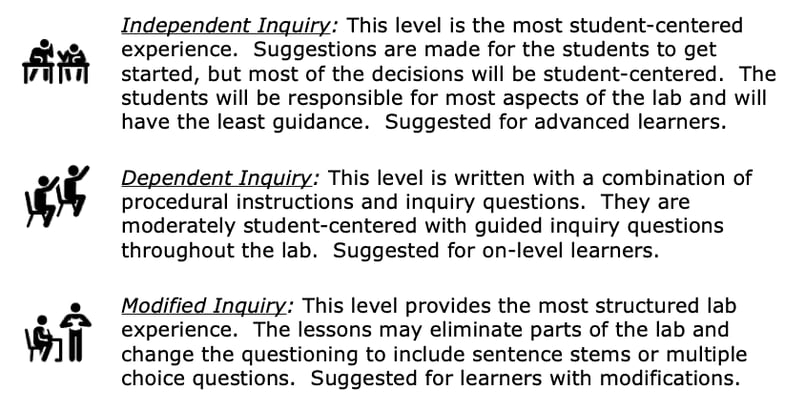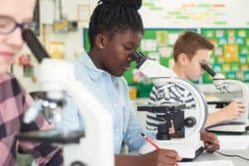Energy Transformations Inquiry Lab
Middle School Inquiry Lab on Energy Transformations
In this lab students will observe different energy transformations through a variety of household objects.
Each inquiry lab will contain an essential question that will drive the lesson and make students think. For this lesson, the essential question is:
- How does energy transform as it moves through common devices?
BACKGROUND INFORMATION AND MATERIALS LIST:
Students will begin the lab by reading the essential question and background information. This can be done individually, as lab groups, or as a whole class. If you consider lab groups, you also might include some type of whole class formative checks before digging into the lab.

Materials List:
- reference page
- lab stations:
- wind-up toys
- electric radio
- poppers
- small microwave
- beaker
- cold water
- flashlight with batteries
- glow stick/bracelet
PROCEDURE:
For this lab, there are six different labs to set up as stations. You can choose which ones to include. Students will have five to ten minutes per station, using the reference card for assistance, to observe and describe how energy is being transferred through each item assigned to the station. Students will have to list which form of energy (thermal, mechanical, electrical, chemical, radiant, or nuclear) is being transferred. Each station will have a set of directions, questions, and area to diagram the energy flow pertaining to the particular item tested.
CONCLUSION
Students will go back to the essential question and write a CER (Claim, Evidence, Reasoning) to conclude the lab. Once completed, students will reflect back on their learning by answering the following questions:
- How did these examples demonstrate the law of conservation of energy?
- Write an example of another energy transfer.
MODIFIED AND INDEPENDENT INQUIRY VERSIONS
All of the Kesler Science inquiry labs come with three different modification levels. Each lab is differentiated using the icons below.
STANDARDS ALIGNMENT
TEKS: 6.9C – Demonstrate energy transformations such as energy in a flashlight battery changes from chemical energy to electrical energy to light energy.

Download Over $100 in FREE Resources
For Middle School Science
Simply create a login below and gain immediate access to a selection of our Kesler Science product line worth $100 - for FREE. There's a full version of every product type! You'll also join tens of thousands of middle school science teachers who receive timely tips and strategies straight to their inbox.





